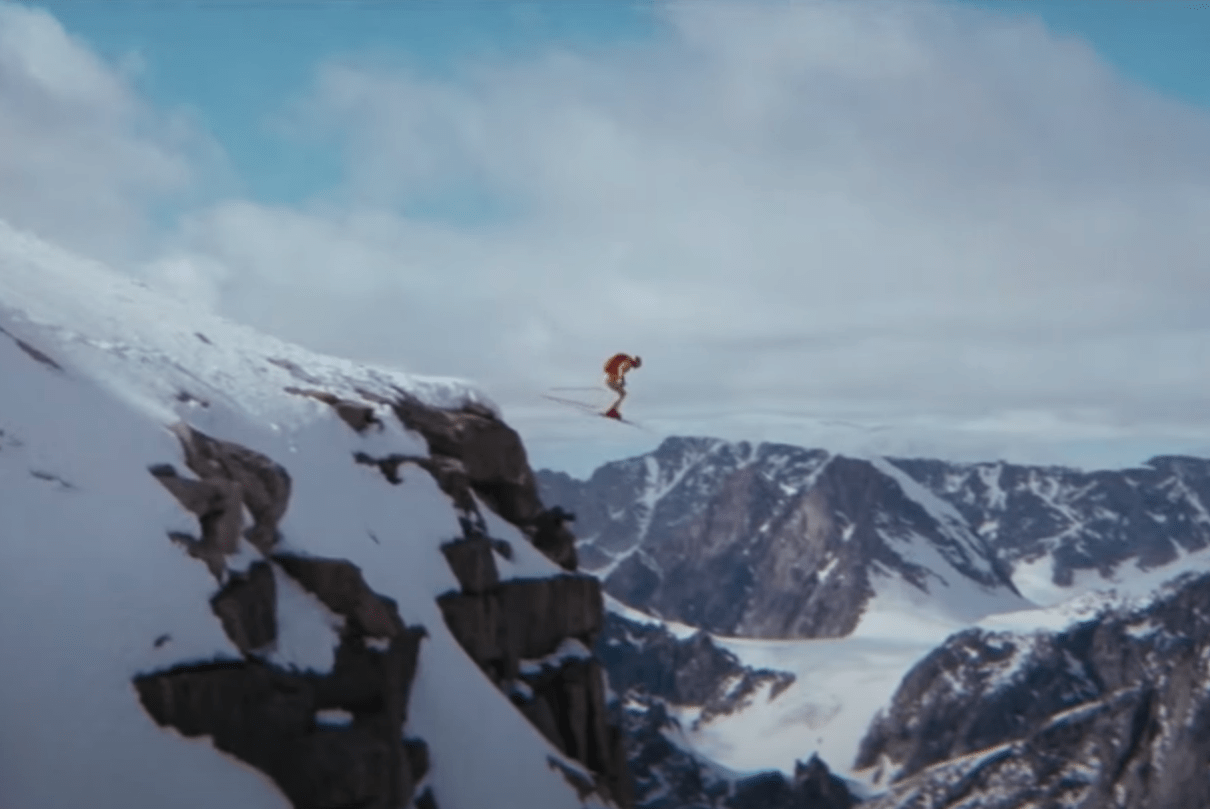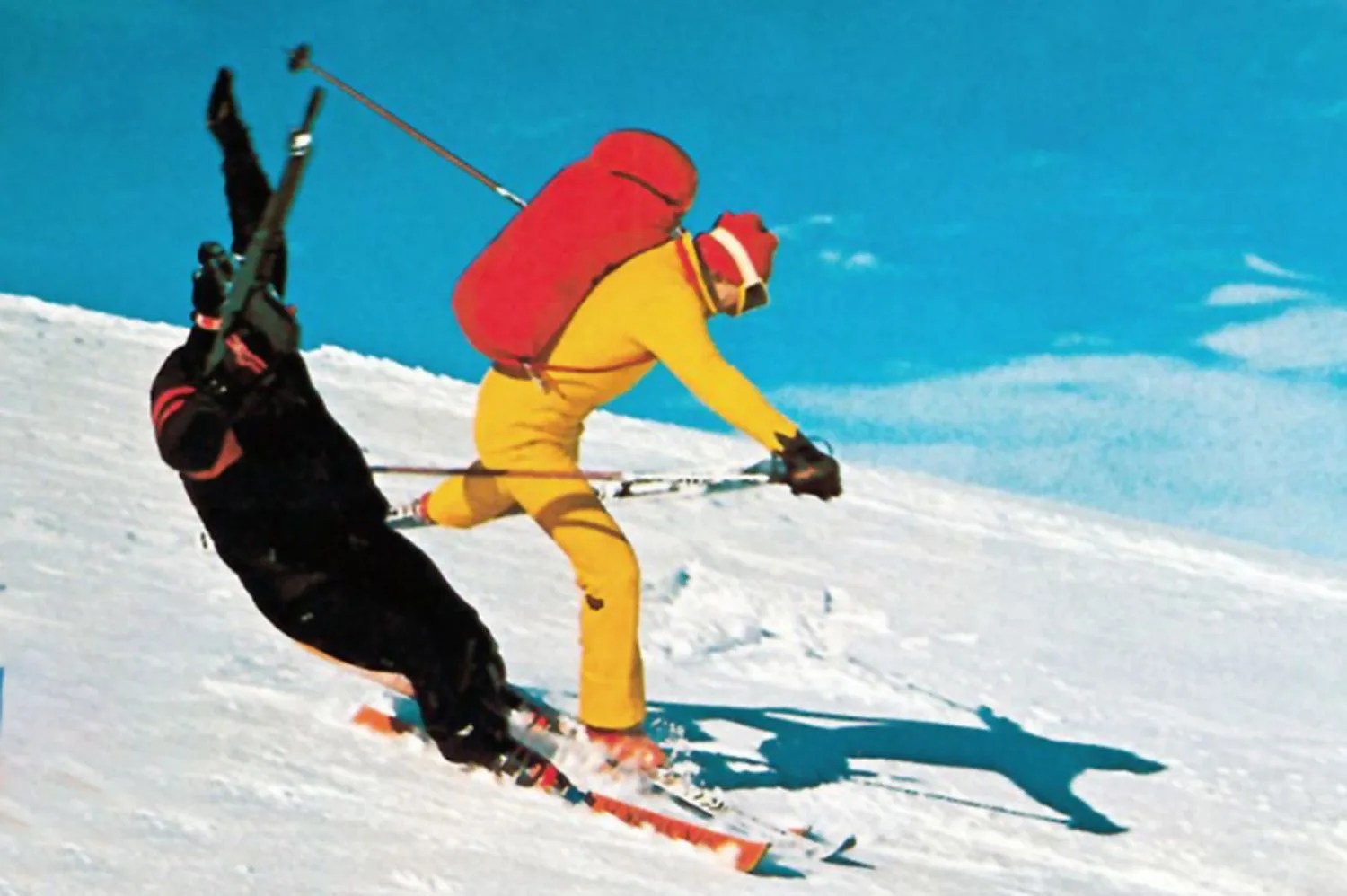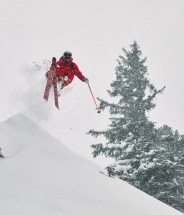Way back in 1977, long before terms like “extreme skiing” and “BASE jumping” were part of the lexicon, the opening sequence of The Spy Who Loved Me blew people’s minds. It begins with Roger Moore’s James Bond leaving a lover behind in a mountaintop cabin because, though she needs him, “so does England.”
She traitorously alerts a bunch of heavily armed ski bums, who chase him down the slopes. Bond fights them off with some epic freestyle skiing — and a ski pole gun, of course — before launching off a cliff. His skis detach and he seems to be helplessly free falling. Then a Union Jack parachute opens, the theme music kicks in, and we are gloriously reminded to always bet on Bond.
I’m guessing most of the theater audience members’ jaws dropped, momentarily, before they cheered, watched the opening credits and got into the flick. Ski geeks, however, probably found themselves asking a critical question: how the hell did the stuntman get his skis off in mid-air that way? After all, almost all alpine bindings release with downward pressure, which isn’t exactly plentiful whilst plummeting through the sky.
 Courtesy
CourtesyVeteran climber and skier Rick Sylvester, who performed this epic feat on Canada’s Mount Asgard in July 1976, has given a number of interviews explaining how he pulled it off. Turns out it was nothing new for him, as he first tried the stunt off Yosemite’s El Capitan in 1972. Only once, however, has he addressed the now obscure piece of gear that made it possible.
“It was during a chance meeting at the Squaw post office that I explained which binding, the original Spademan which had no toe piece, I used, and the simple release system I devised with it,” he commented on a Reddit post about the stunt. “Whereas most alpine ski bindings require downward pressure to be released, the idea here was that the binding needed for this purpose would be one requiring upward pressure, an upward pull, to be released in midair.”




